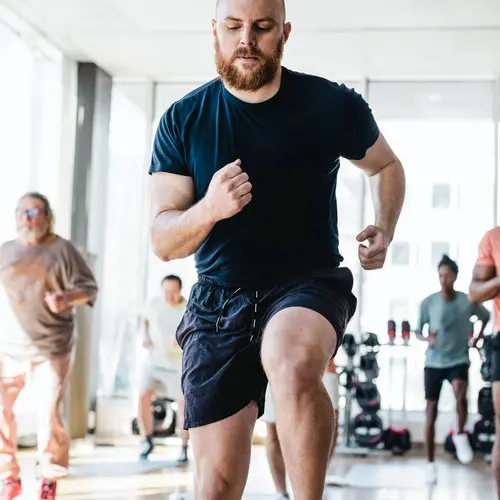Functional training is a type of exercise that looks like movements you make in your daily life. It can be helpful for athletic performance, injury prevention, and other everyday fitness tasks.
How Functional Training is Used in Exercise
Functional movements use large groups of muscles working together across your body. These exercises often look similar to movements you’d make in your daily life. Picking up a heavy object, swinging a baseball bat, or carrying groceries are real-world situations that functional training can help you improve.
While many exercises fit the definition of “functional training,” others don’t. Less-functional strength training can have different characteristics and goals:
Workouts that target a specific body part. Non-functional exercises work on only one muscle, or a muscle group in one part of the body. Think “leg day” or “arm day” at the gym. Traditional strength training exercises like bicep curls, calf raises, and seated leg press are all less functional.
Focusing on the appearance of certain muscles. Many bodybuilders and non-functional exercises aim to increase the size of a specific muscle. Functional training prioritizes muscle movement over appearance.
How to Incorporate Functional Training Into Your Workouts
Functional workouts can look different across muscle groups and goals. Some common functional exercises include:
- Push-ups
- Walking lunges
- Jump squats
- Jumping, lunging, or stepping onto an elevated surface
- Bodyweight squats
- Lateral bounds (running from side to side)
- Jumping jacks
- Movements done while balancing on one leg
All of these exercises target more than one muscle or muscle group at a time.
How to Get the Most Out of Functional Training
Functional training isn’t one-size-fits-all. The benefits and drawbacks are different for everyone depending on their goals, the exercises they practice, and more.
Combine it with other exercises. Different styles of exercise can help you reach similar goals. Exercises that only target a few leg muscles can still help runners increase their speed. Use functional training along with other workout styles to improve your fitness.
Specificity matters. Chair squats will help you get up from chairs more than jumping jacks. Your skill in an activity is better when your functional training closely resembles it.
Be safe. Functional training can be safer than other types of exercise, but it still carries risk of injury. Perform intense functional movements with correct form to get the most out of your workout. Talk to your doctor if you have any questions or concerns about starting a functional exercise program.
Benefits of Functional Training
Functional exercises teach your body to work as a whole rather than training specific parts. Strengthening the whole body in this way has many benefits for your health.
Daily life. Functional training trains the same muscle movements you use in everyday life. For example, a senior citizen might practice bodyweight squats to improve their ability to stand up from a chair. These everyday activities can get easier when you train for them.
Balance and coordination. Functional exercises can help maintain and preserve your sense of balance. Functional exercise makes different parts of your body move together smoothly. This is helpful for older adults to prevent falling and related injuries. People recovering from injuries can also regain balance with functional training.
Injury protection. Perfecting the movements involved in daily life can help you prevent injury. Functional training protects your spine from movements that cause back pain. If you lift heavy objects off the floor correctly while exercising, you can avoid accidents picking up heavy objects at work.
Athletic performance. Athletes improve with functional exercises based on the movements of their sport. A basketball player might practice leaping from side to side to improve their agility and speed on the court. Rowers may practice squats to train the same leg muscles they use in the boat.
Time-efficient. Functional exercises can be more time-efficient for fitness and weight loss than focusing on one muscle at a time. Adding a few shorter, more intense full-body exercise sessions to your routine boosts the calories you burn.

